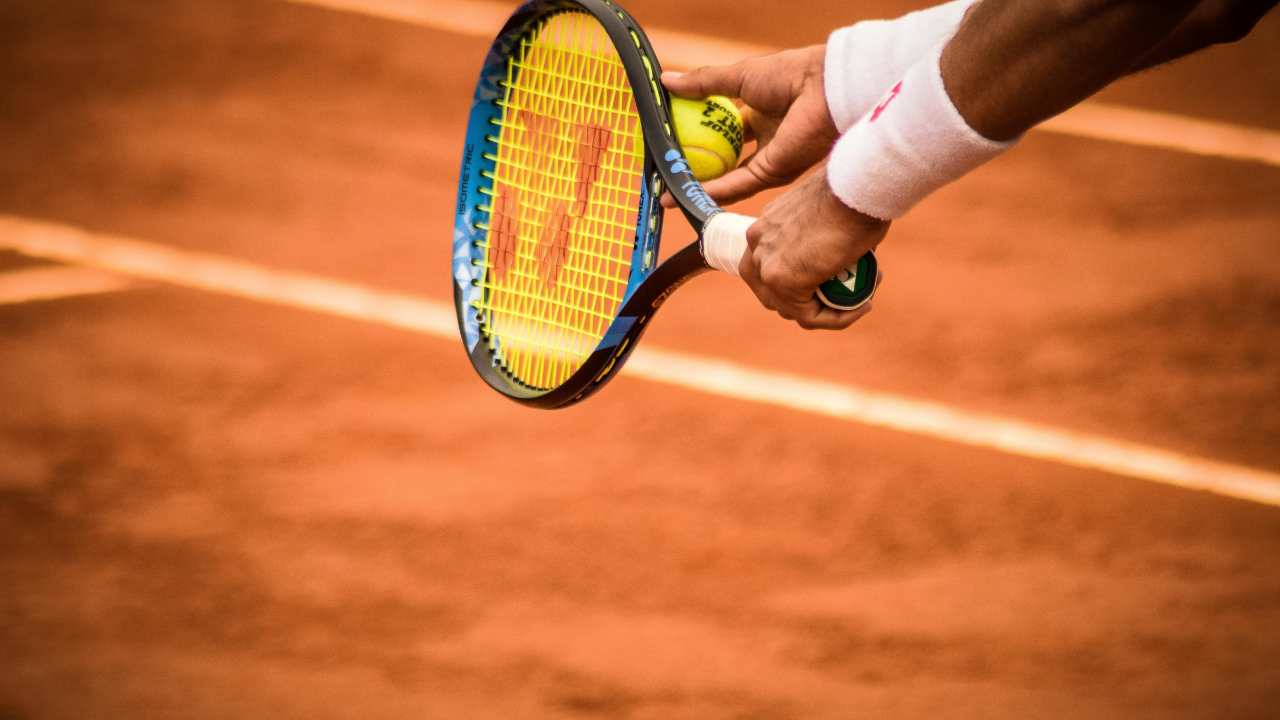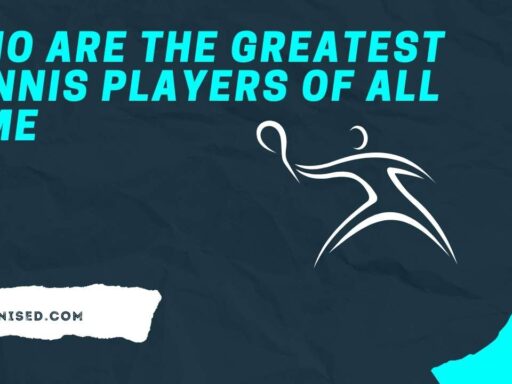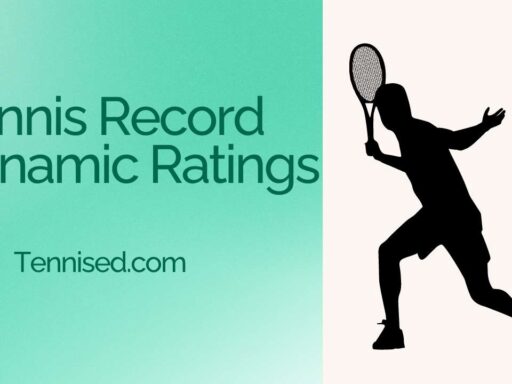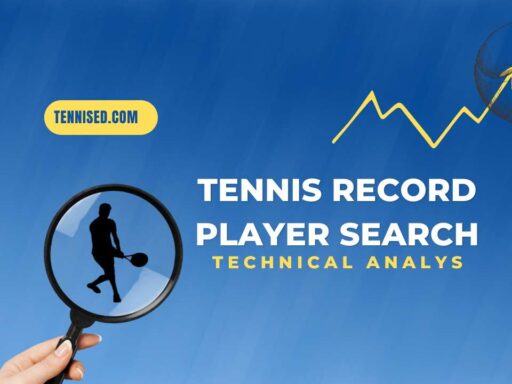Discover the art of record serve in tennis on. Learn techniques, tips, and strategies to improve your serve and dominate the court.
In this paragraph, the game of Tennis is introduced as a delicate and enduring sport that has always been an arena for making and breaking records. This is because it is clear that athletes exhibit great power and precision in record serve in tennis. Hence, this paper investigates what it means to hold this record by tracing its development, defining its importance, and comprehending how to do it.
Introduction
Every point begins with a serve, a fundamental part of tennis. It allows a player to dictate play for the rest of the rally. Technically, over time, serves have changed from just a way to start the game into an effective weapon. The record serve in tennis doesn’t involve simply hitting the ball hard; it involves perfect timing, excellent technique, and fitness levels. Spectacular moments of sheer strength and accuracy have mesmerized fans and players, making them crucial lessons for anyone wishing to excel in sports.
The fascination surrounding this notion lies within the fact that it can change the outcome of a match. A strong serve can intimidate opponents, leading to advantageous points and energy management throughout the game. Therefore, hours are dedicated to perfecting this aspect of one’s game as players seek to push their physical boundaries on the court.
As we embark on this exploration, we aim to understand how serving has evolved with time, dissect its power techniques, and celebrate those individuals who broke records through serving balls faster than others ever did before them at any given moment. However, let’s not forget that this journey is not about numbers but rather an undying willpower ingrained into our dear game.
The Evolution of the Tennis Serve
The tennis serve has come a long way since the inception of tennis as we know it today. In the early days, serves were underhand because they were aimed at starting points only. Consequently, like many other things associated with the sport, serves evolved and became a high-overhead execution with a lot of power and spin potential.
Some of the factors that have led to this transformation include the game’s technology, training methods, and players’ physical conditions. This is because rackets used in tennis have become lighter and more powerful, allowing for more powerful hitting. Training also changed, with biomechanics taking center stage and allowing players to serve optimally in power and accuracy.
Therefore, it can be said that there has been a change in the dynamics of the sport. As serves became key to winning points on the court, players started paying attention to mastering this technique, leading to a race for the fastest, most effective serve. Consequently, through this intense competition, the serve evolved into a showstopper and drew fans and future tennis enthusiasts into watching such tournaments.
The Anatomy of a Bullet Serve
Imagine softly tipping the ball up with an easy toss from your hand-almost deceptive in its simplicity that motion is smooth and graceful. And yet what follows dispels all that tranquility connected to the throw. The server whips the racket head, accelerating at an alarming speed before striking the ball at the predicted point in mid-air. The outcome? A swerving shot that doesn’t fly—it screams!
Tennis’ Titans and the Boom Serves
Several players have been immortalized in tennis literature for clocking some of the fastest serves ever. Riding on top of this trend is Sam Groth, the current world record holder for the fastest serve in a professional match. At 163.7mph, Groth’s serve flew past Ivo Karlovic’s previous world record of 156mph, set in 2013.
However, these men are not outliers but rather products of an era when tennis has evolved into a power-play sport. Names such as Andy Roddick, Goran Ivanišević, and Taylor Dent will forever be associated with formidable service speed. The modern game, which emphasizes agility and strength training, has created great servers like John Isner and Milos Raonic, who consistently bomb serves with speeds above 140 mph.
But what sets apart these service velocities is their raw pace and their diversity. For them, an ace shot is not just about overhitting your opponent but preparing to win the rest of the point at a go. The ability to place such accurate services at such high speeds is as much art as physical performance.
Strategic & Psychological Advantages of Serving
Rather, it presents itself as a strategic value that cannot be taken away from any player during his or her game because it is very powerful. A fast serve can determine much in a crucial match, taking control of the point before his or her adversary realizes anything. It can get quick points made, add pressure to an opponent, or even give a way out through gentle touches when they are on defense.
On another level, fast serving can mentally demoralize opponents, reducing reaction times and leaving them always playing catch-up games. In tennis chess matches strong serves may heavily skew chances toward one side, thus influencing more than one game or set.
Understanding The Significance Of A Power Serve
A powerful serve in tennis is more than just a show of strength. It is a strategic tool that can set the match’s tempo, disrupt an opponent’s rhythm, and give psychological benefits. A power serve is significant as it creates multiple benefits on the field.
First, by virtue of turning into aces, a strong serve can earn points within no time without engaging in long, drawn-out rallies. Such effectiveness is priceless during games, especially in situations where every point counts significantly. Second, hitting hard places the burden of reaction on one’s opponent, who will have to respond quickly, leading to mistakes or feeble replies that may be easily converted.
The psychological impact of a power service should not be underestimated. Players who have made their name in powerful serving also boast an aura of invincibility, thereby intimidating their opponents well before a game begins. This psychological warfare is essential to lawn tennis, as confidence and mental strength can be as crucial as physical ability.
The Fastest Record Serve in Tennis History
In the sport’s history, there have been some amazing moments in pursuing record serves for tennis. The record-breaking serves, assumed impossible when recorded, have set precedents and pushed human limits.
One memorable serve was by Sam Groth during the 2012 Busan Open, which recorded 163.7 mph (263.4 km/h). It remains an outstanding achievement, demonstrating how much power humans are capable of generating within themselves. In addition to this, John Isner and Ivo Karlović came quite close by hitting speeds above 150 mph, therefore earning them places in Tennis’s books.
These record-breaking symbolize how far athletes have taken the sport through self-sacrifice. These examples also demonstrate this combination of technique and precision plus raw power necessary to accomplish such mind-boggling statistics, thus encouraging young players to aim higher than ever before.
Notable Players Known For Their Record-Breaking Serves
Some players left indelible marks with their records in serving throughout their careers, pitching them among those who had the fastest services ever played in professional tennis ranks, like Sam Groth, John Isner, and Ivo Karlović, respectively. Moreover, we cannot underestimate other aces’ impacts on games, although they are not like those above, because too many would fall for Roger Federer’s shots or Andy Roddick’s strengths during his matches while watching him play hard against his opponent Serena Williams.
It is also important to note that many players who have achieved fame for their incredible serves have contributed to the tennis game. By doing this, they set standards that inspire many current and upcoming players to ensure their serve is perfect in each match. This is because it was not only about serving records, but it had more to do with the influence such people had on tennis, putting it on a path that will always be defined by power and precision as the end to all achievements.
The Technique Behind a Powerful Serve
Developing a powerful serve in tennis requires physical strength, technique, and mental readiness. The technique behind a powerful serve begins with a strong foundation, including the grip, stance, and ball toss. These elements must be painstakingly synchronized to create an optimum launching pad for service.
The term kinetic chain is important for understanding how a serve works mechanically. This concept refers to all body parts having sequential movements, from pushing off from the ground using legs up to hitting through the ball with elbow followed by arm’s whipping action. Therefore, it is essential to optimize the efficiency of this kinetic chain during hitting.
However, it should be noted that power alone does not guarantee an effective service. Spin, placement, and variety are other dimensions involved in this stroke, too. Therefore, mastering how to do good serves means striking a balance between these aspects while adjusting oneself according to different opponents or scenarios during games.
How to Improve Your Serve in Tennis
You should focus on the approach, techniques, physical exercise, and mental toughness to improve your tennis serve. Mastering the basics is the initial step for a strong foundation. The building blocks of this foundation include learning to serve from scratch, from taking position at the beginning to finishing up.
Technical exercises are also important, improving accuracy, spin, and power. These drills must be practiced consistently and with attention to detail, which helps refine the serve gradually. Another useful strategy is recording and analyzing serves, which lets one know where they need improvement.
Physical conditioning is also vital because a powerful serve requires good stamina, strength, and flexibility. To enhance performance, a planned training program for serving muscles should be developed. This plan must factor in leg workouts, a core routine, and exercises meant for shoulders to ensure holistic preparation.
Training Exercises for Better Serve Speed & Accuracy
Some exercises stand out when it comes specifically to improving serve speed or accuracy. For instance, jump squats and medicine ball throws can facilitate more explosive power, hence increasing serve speed through plyometric means. Similarly, these involve shoulder and wrist workouts, which develop the whip action of service, essential for increasing speed and spin.
A player’s precision can be honed using accuracy drills that aim at different parts of the service box about specific placements. Such regular practices will enable players to place services accurately under pressure during competitive matches.
Thus, if you incorporate these exercises into your regular training schedule while practicing your serves consistently, it will go a long way towards improving here. Then you can get closer than ever before at hitting an ace every time you step onto the court, irrespective of who you are playing against, especially if one doesn’t always give up when things seem difficult but rather keeps going until he gets it right based on comments made by him as we trained together last summer.
The Impact of Record Serve in Tennis
Record serves have significant impacts during tennis matches. Winning points is just the beginning because a strong serve can dictate the pace of the match and exert control over it. Such dominance helps players stay fresh, stay focused, and put pressure on their opponents by creating chances for breaks.
Furthermore, the psychological effect of facing a big serve should not be underestimated either. This may make opponents change their strategies, either playing more conservatively or taking risks against such an advantage in serving. In fact, this mental game that incorporates critical confidence and fear may play as much part as today’s physical contest.
Thus, anything like record serve is not merely a statistic; it’s a strategic tool that can influence the outcome of any match. Players who can serve at such speeds possess a weapon capable of turning around games at crucial stages to tip things in their favor.

Credit: www.pexels.com
Frequently Asked Questions
Tennis starts with serving, which is important in any game because it helps determine what happens next after each beginning shot. It calls for power, accuracy, and tactics and is regarded as a complicated skill. Frequently asked questions (FAQs) include:
What Is A Serve In Tennis?
Definition: “A server must hit the ball so that it touches directly inside the diagonally opposite service box without being touched by the opponent” (Dictionary.com).
How Do You Serve In Tennis?
Basic Steps:
Positioning: Stand behind the baseline slightly sideways, with your front foot pointing towards the right net post for right-handed players or the left net post for left-handed players.
GRIP: Use a “Continental grip” in which the top knuckle of your index finger should be positioned on the first bevel of the racquet handle.
BALL TOSS: Throw up a ball in front of you, such that its peak is where you can hit it.
SWING: Swing your racquet backward and over your head, hitting the ball above and across your body.
WHAT ARE THE DIFFERENT TYPES OF SERVICES?
FLAT SERVE: A very fast serve with little spin aimed at speed and placement.
SLICE SERVE: This allows for side spin to make the ball curve or skid, making it tough for an opponent to return.
KICK SERVE: This sort of serve has topspin, causing a high bounce away from an opponent. It is usually used as a second serve because it is so reliable that it guarantees good results.
HOW CAN I IMPROVE MY SERVICE?
CONSISTENT PRACTICE: Regularly practicing is essential for both good and strong serves
SERVING DRILLS: Various serving drills will help improve accuracy, power, and spin on different types of serves.
VIDEO ANALYSIS : Record yourself playing, especially when serving, so you can go back and fix any mistakes you made after watching the video.
PROFESSIONAL COACHING: Find a personal coach who will give you individualized feedback based on your play style and areas that need improvement.
COMMON MISTAKES THAT PEOPLE MAKE- IN SERVING
INACCURATE BALL TOSS : When serving, misplacing where we throw our balls can result in many errors in our service
WRONG GRIP: Using the wrong technique could lessen how powerful or spiny u may be
NO FOLLOW THROUGH: Not being able to follow through correctly can diminish how effectively you serve
FOOT FAULTS: Stepping on or across the baseline before “contacting” the ball is illegal and, hence, a fault.
HOW IMPORTANT IS THE SERVE IN TENNIS?
STRATEGIC ADVANTAGE: A strong serve can give a player a huge edge, setting the tone for the rest of the point.
PSYCHOLOGICAL FACTOR: When an opponent can strike his serves effectively, it benefits him by intimidating rivals
SCORING OPPORTUNITIES: Hitting powerful serves can bring about direct points through aces or cause easy-to-kill returns
CONCLUSION
The record serve in tennis is an amazing accomplishment that signifies the growth of sports and continued dedication to improvement from athletes. It perfectly combines power, precision, and technique, reflecting what tennis is all about: competition.
As we contemplate how far the serve has come from being a mere game starter to becoming a record-setter, it becomes evident that this transformation was driven by determination and invention. The legacy of the record serve lies not in its numerical value but in its potential for inspiring players at every level to break down barriers and redefine limits on the court.
In search of this kind of service ace, tennis identifies its heroes and future, for it is within their hands that serving greatness can captivate, dominate, or lift play into another dimension.






